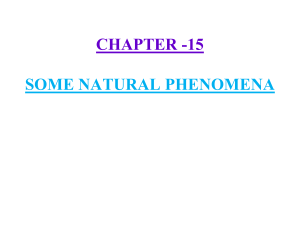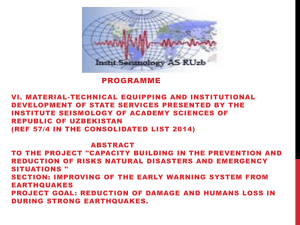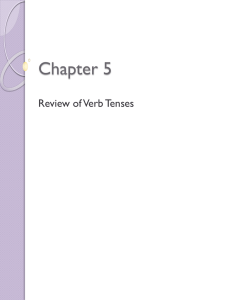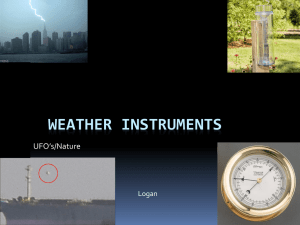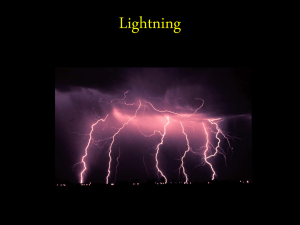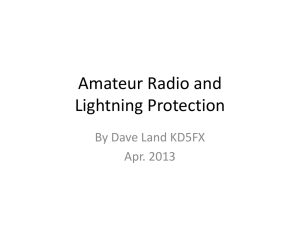File - Bee hub
advertisement
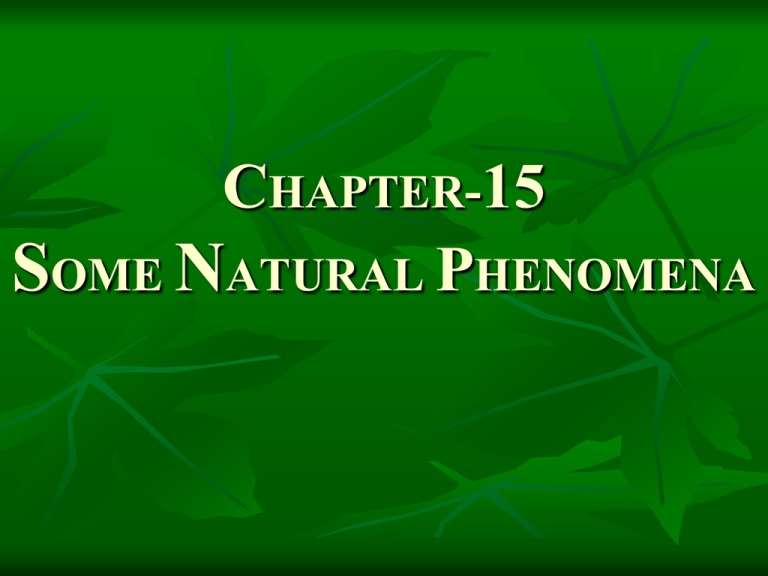
CHAPTER-15 SOME NATURAL PHENOMENA A natural phenomenon is a non-artificial event in the physical sense, and therefore not produced by humans, although it may affect humans (e.g. bacteria, aging, natural disasters, death.) Common examples of natural phenomena include volcanic eruptions, weather, and decay. Most natural phenomena, such as rain, are relatively harmless so far as humans are concerned. There are various types of natural phenomena, which include (and are not limited to), Meteorlogical phenomena, weather, including hurricanes, thunderstorms and tornadoes, and geological phenomena , including volcanic activity and earthquakes. Lightning You may have seen sparks on an electric pole when wires become loose. This phenomenon is quite common when wind is blowing and shaking the wires. You may have also seen sparks when a plug is loose in its socket. Lightning is also an electric spark, but on a huge scale. In ancient times, people did not understand the cause of these sparks. They were, therefore, afraid of lightning and thought that the wrath of gods was visiting them. Now, of course, we understand that lightning is caused by the accumulation of charges in the clouds. The Sparks that the Greeks Knew About The ancient Greeks knew as early as 600 B.C that when amber (amber is a kind of resin) was rubbed with fur, it attracted light objects such as hair. You might have seen that when you take off woollen or polyester clothes, your hair stands on end. If you take off these clothes in the dark, you even see a spark and hear a crackling sound. In 1752 Benjamin Franklin, an American scientist, showed that lightning and the spark from your clothes are essentially the same phenomena. However, it took 2000 years for this realisation to occur. Charging By Rubber Activity 15.1 Take a used ball pen refill and rub it vigorously with a piece of polythene. Bring it close to small pieces of paper. Take care not to touch the rubbed end of the refill with your hand or with a metallic object. What do you observe? Answer : When a plastic refill is rubbed with polythene, it acquires a small electric charge. Similarly, when a plastic comb is rubbed with dry hair, it acquires a small charge. These objects are called charged objects . In the process of charging the refill and the plastic comb, polythene and hair also get charged. Types Of Charges and Their Interaction Activity 15.3 (a) Inflate 2 balloons. Hang them in such a way that they do not touch each other. Rub both the balloons with a woollen cloth and release them. What do you observe? Answer : A charged balloon repelled a charged balloon. Now let us repeat this activity with the used pen refills. Rub one refill with polythene. Place it carefully in a glass using the tumbler as a stand Rub the other refill also with polythene. Bring it close to the charged refill. Be careful not to touch the charged end with your hand. Is there any effect on the refill in the tumbler? Do the two attract each other, or repel each other? Answer :A charged refill repelled a charged refill. (a) Rub a refill and place it gently in a glass tumbler as before. Bring an inflated charged balloon near the refill. What do you observe? Answer : A charged balloon attracted a charged refill. It is a convention to call the charge acquired by a glass rod when it is rubbed with silk as positive. The other kinds of charge is said to be negative. It is observed that when a charged glass rod is brought near a charged plastic straw rubbed with polythene there is attraction between the two. The electrical charges generated by rubbing are static. They do not move by themselves. When charges move, they constitute an electric current. The current in a circuit which makes a bulb glow, or the current that makes a wire hot, is nothing but a motion of charges. Transfer Of Charge Activity 15.4 Take an empty jam bottle. Take a piece of cardboard slightly bigger in size than the mouth of the bottle. Pierce a hole in it so that a metal paper clip can be inserted. Open out the paper clip. Cut two strips of aluminium foil about 4cm x 1cm each. Hang them on the paper clip. Insert the paper clip in the cardboard lid so that it is perpendicular to it. Charge a refill and touch it with end of the paper clip. Observe what happens. Is there any effect on the foil strips? Do they repel each other or attract each other? Now, touch other charged bodies with the end of the paper clip. Do foil strips behave in the same way in all cases? Why the foil strips repel each other? Answer : The aluminum foil strips receive the same charge from the charged refill through the paper clip (remember that metals are good conductors of electricity). The strips carrying similar charges repel each other and they become wide open. Such a device can be used to test whether an object is carrying charge or not. This device is known as electroscope. Thus, we find that electrical charge can be transferred from a charged object to another through a metal conductor. Touch the end of the paper clip gently with hand and you will find a change in the foil strips. They come back to their original state. Repeat charging of foil strips and touching the paper clip. Every time you will find that the foil strips collapse as soon as you touch the paper clip with hand. Why does it happen? The reason is that the foil strips lose charge to the earth through your body. We say that the foil strips are discharged. The process of transferring of charge from charged object to the earth is called earthing. Earthing is proving in buildings to protect us from electrical shocks due to any leakage of electrical current. The Story Of Lightning During the development of a thunderstorm, the air current move upward while the water droplets move downward. These vigorous movements cause separation of charges. By a process, not yet completely understood, the positive charges collect near the upper edges of the clouds and the negative charges accumulate near the lower edges. There is accumulation of positive charges near the ground also. When the magnitude of the accumulated charges become very large, the air which is normally a poor conductor of electricity, is no longer able to resist their flow. Negative and positive charges meet, producing streaks of bright light and sound. We see streaks as lightning. The process is called an electric discharge. The process of electric discharge can occur between two or more clouds, or between clouds and earth. Today we need not get frightened by lightning like our ancestors did. Now we understand the basic phenomenon. Scientists are trying hard to improve this understanding. However, lightning strike could destroy life and property. It is, therefore, necessary to take measures to protect ourselves. Lightning Safety During lightning and thunderstorm no open place is safe. Hearing thunder is an alert to rush to a safer place. After hearing the last thunder, wait for some time before coming out of the safe place. Finding a Safer Place A house or a building is a safer place. If you are travelling by car or by bus, you are safe inside with windows and doors of the vehicle shut. Do’s and Don’ts during a Thunderstorm Outside Open vehicles, like motorbikes, tractors, construction machinery, open cars are not safe. Open fields, tall trees, shelters in parks, elevated places do not protect us from lightning strokes. Carrying an umbrella is not at all a good idea during thunderstorm. If in a forest, take shelter under shorter trees. If no shelter is available and you are in an open field, stay far away from all trees. Stay away from poles or other metal objects. Do not lie on the ground. Instead, squat low on the ground. Place your hands on your knees with your head between the hands. This position will make you the smallest target to be struck. Inside the House Lightning can strike telephone cords, electrical wires and metal pipes (remember, lightning is an electrical discharge). During a thunderstorm contact with these should be avoided. It is safer to use mobile phones and cordless phones. However, it is not wise to call up a person who is receiving your phone through a wired phone. Bathing should be avoided during thunderstorms to avoid contact with running water. Electrical appliances like computers, TVs, etc should be unplugged. Electrical lights can remain on. They do not cause any harm. Lightning Conductors Lightning conductor is a device used to protect buildings from the effect of lightning. A metallic rod, taller than the building, is installed in the walls of the building during its construction. One end of the rod is kept out in the air and the other is buried deep in the ground. The rod provides easy route for transfer of electric charge to the ground. The metal columns used during the construction, electrical wires and water pipes in the buildings also protect us to an extent. But do not touch them during a thunderstorm. Earthquakes The natural phenomena can cause large scale destruction of human life and property. Fortunately, these phenomena can be predicted to some extent. The weather department can warn about a thunderstorm developing in some area. If a thunderstorm occurs there is always chance of lightning and cyclones. So, we get time to take measures to protect ourselves from the damages caused by these phenomena. There is, however, one natural phenomena which we are not yet able to predict accurately. It is an earthquake. It can cause damage to human life and property on a large scale. A major earthquake occurred in India on 8 October 2005 in Uri and Tangdhar towns of North Kashmir. Before that a major earthquake occurred on 26 January 2001 in Bhuj district of Gujarat. What is an Earthquake ? An earthquake is sudden shaking or trembling of the earth which lasts for a very short time. It is caused by a disturbance deep inside the earth’s crust. Earthquakes occur all the time, all over the earth. They are not even noticed. Major earthquakes are less frequent. They can cause immense damage to buildings, bridges, dams and people. There can be a great loss to life and property. Earthquakes can cause floods, landslides and tsunamis. A major tsunami occurred in India on 26 December 2004. All the coastal areas around the ocean suffered huge losses. What causes an earthquake? In ancient times, people did not know the true cause of earthquakes. Their ideas were, therefore, expressed in mythical stories. Similar myths were prevalent in other parts of the world. Now we know that tremors are caused by the disturbance deep down inside the upper most layer of the earth called crust. The outer most layer of earth is not in one piece. It is fragmented. Each fragment is called a plate. These plates are in continual motion. When they brush past one another, or a plate goes under another due to collision, they cause disturbance that shows up as an earthquake on the surface of the earth. Tremors on the earth can also be caused when a volcano erupts, or a meteor hits the earth, Or an underground nuclear explosion is carried out. However most earthquakes are caused by the movement of earth’s plates. Since earthquakes are caused by the movement of plates, the boundaries of the plates are the weak zones were earthquakes are more likely to occur. The weak zones are also known as seismic or fault zones. In India the threatened are Kashmir, Western and Central Himalayas, the whole of North-East, Rann of Kutch, Rajasthan and the Indo-Gangetic Plane. Some areas of South India also fall in the danger zone. The power of an earthquake is expressed in terms of a magnitude on a Richter scale. Really destructive earthquakes have a magnitude higher than 7 on the Richter scale. Both Bhuj and Kashmir earthquakes had magnitudes greater than 7.5. The tremors produce waves on the surface of the earth. These are called seismic waves. The waves are recorded by an instrument called seismograph. The instrument is just a vibrating rod, or a pendulum, which starts vibrating when tremors occur. A pen is attached to the vibrating system. The pen records the seismic waves on a paper which move under it. By studying these waves, scientists can construct a complete map of the earthquake. They can also estimate its power to cause destruction. Protection against Earthquakes People living in seismic zones, where the earthquakes are more likely to occur, have to be specially prepared. First of all, the buildings in these zones should be so designed that they can withstand major tremors. Modern building technology can make it possible. It is advised to make the structure simple so that it is ‘Quake Safe’. Construct qualified architects and structural engineers. In high seismic areas, the use of mud or timber is better than using heavy construction material. Keep roofs as light as possible. In case the structure falls, the damage will not be heavy. It is better if the cupboards and shelves are fixed to the walls, so that they do not fall easily. Be careful where you hang wall clocks, photo-frames, water heaters etc., so that in the event of an earthquake, they do not fall on people. Since some buildings may catch fire due to an earthquake, it is necessary that all buildings, especially tall buildings, have fire fighting equipment in working order. The central Building Research Institute, Roorkee, has developed knowhow to make quakeproof houses. In the event that an earthquake does strike, take the following steps to protect yourself. If you are at home Take shelter under a table and stay there till the shaking stops. Stay away from tall and heavy objects that may fall on you. If you are in bed, do not get up. Protect your head with a pillow. If you are outdoors Find a clear spot, away from buildings, trees and overhead power lines. Drop to the ground. If you are in a car or a bus, do not come out. Ask the driver to drive slowly to a clear spot. Do not come out till the tremors stop.


